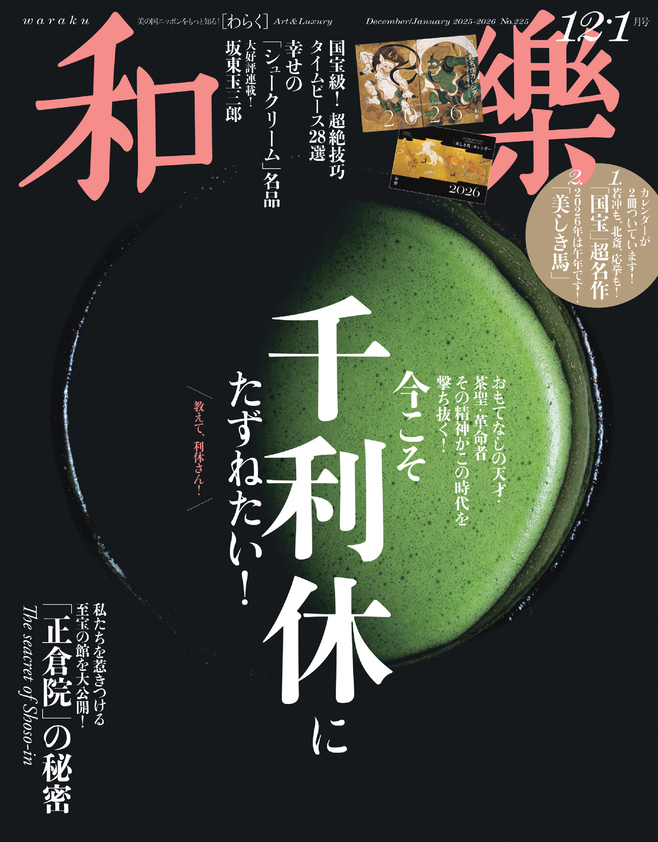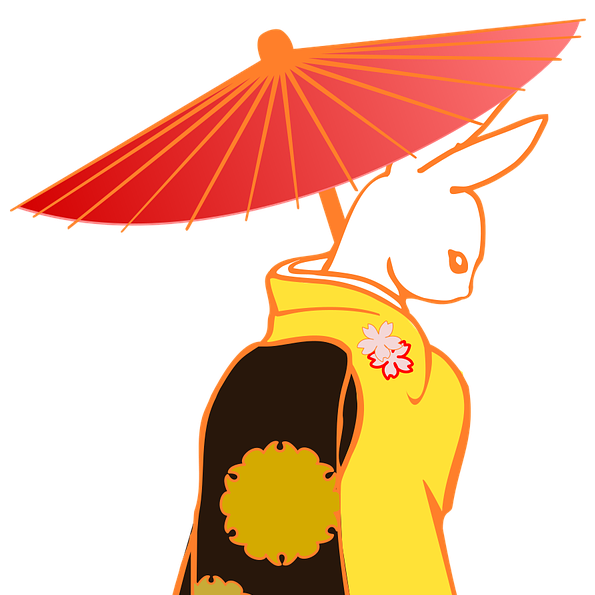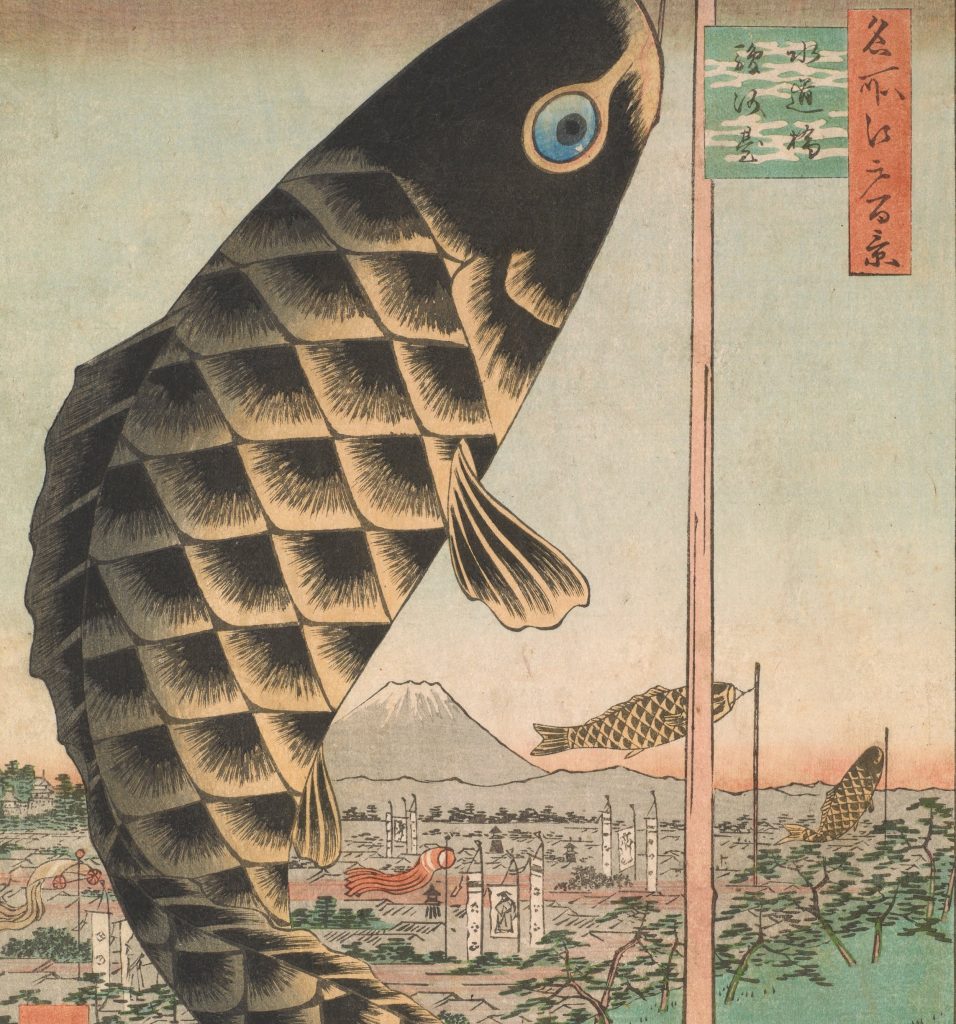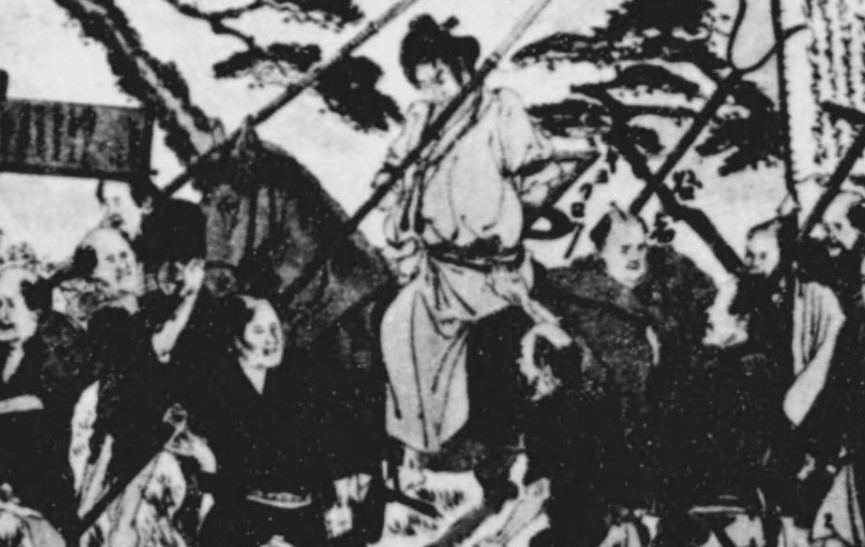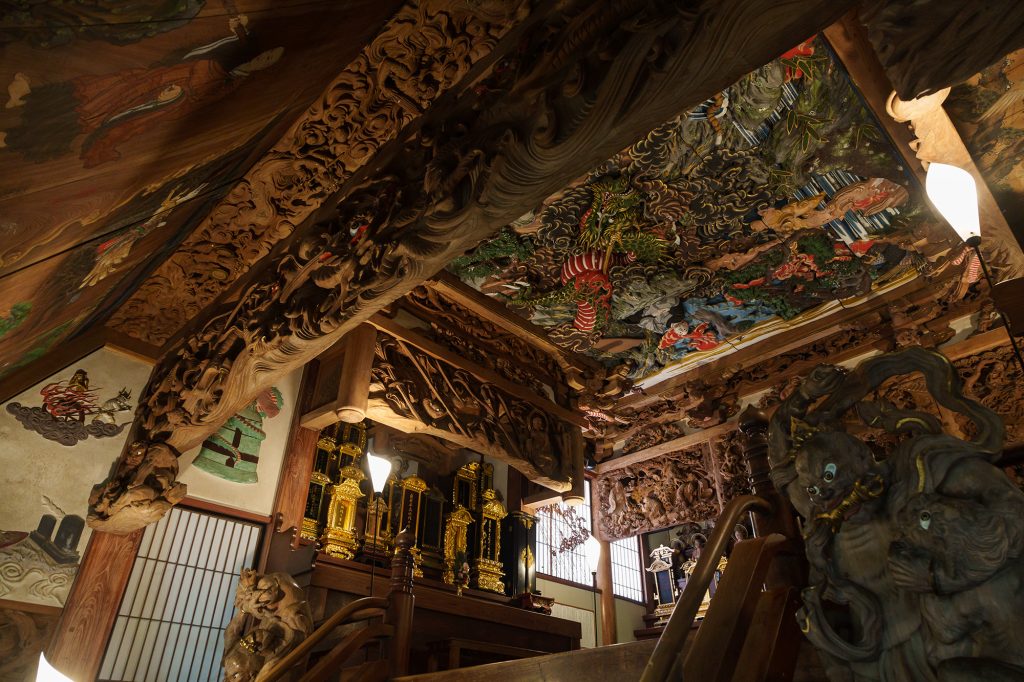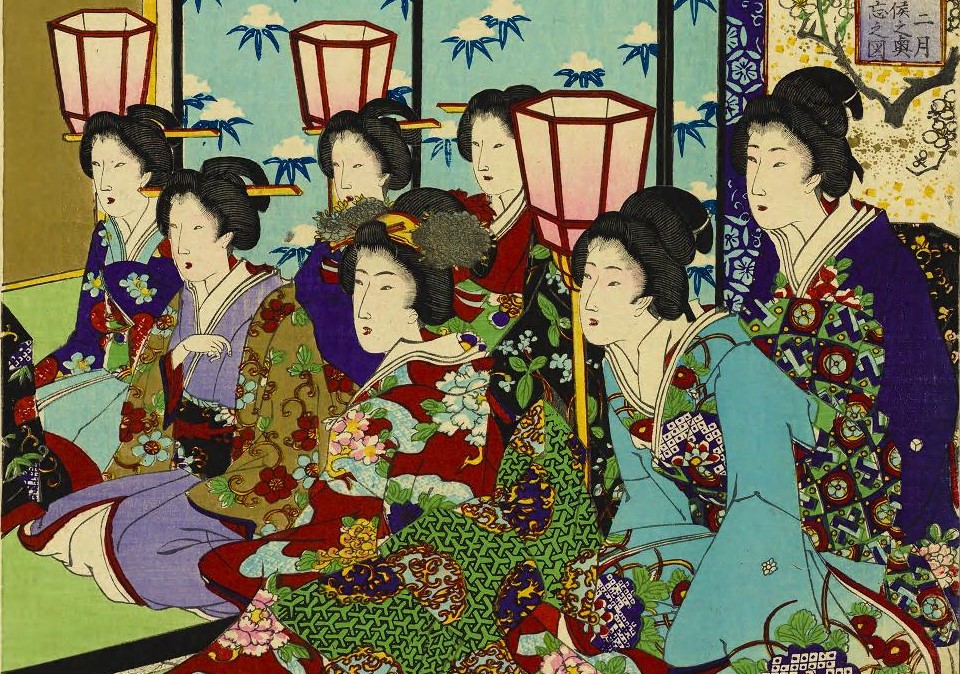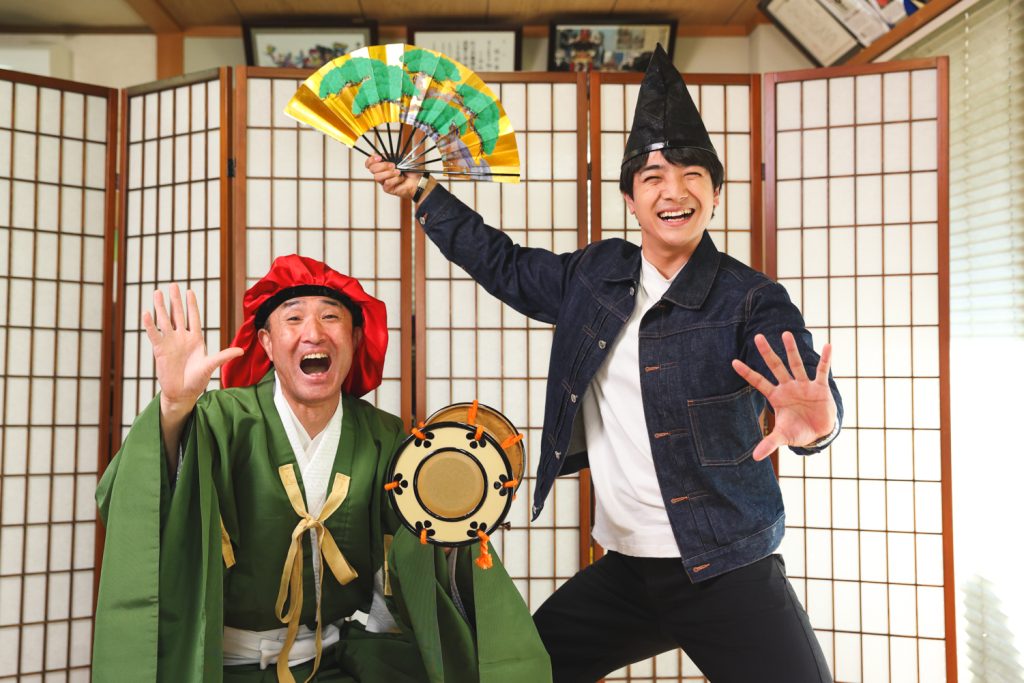Nothing reveals a person’s character, quite like a letter.
“Ippitsukeijo, hinoyojin, osen nakasuna, uma koyase. (一筆啓上、火の用心、お仙泣かすな、馬肥やせ: Just a quick note: Be cautious of fire, don’t make Osen cry, and feed the horse well.”
This brief message was written by Honda Shigetsugu (本多重次) to his wife. It’s famous for being remarkably simple and short.
Shigetsugu, a fierce warrior known among Tokugawa (徳川)’s retainers as ‘Oni Sakuza (鬼作左, demon sakuza)’, served under three generations of the Tokugawa family, starting with Ieyasu (家康) ’s grandfather at the age of seven and continuing through to Ieyasu himself. His fairness and integrity are said to have had a profound influence on the young Ieyasu.
The letter above was penned during the Battle of Nagashino (長篠), where the combined Oda-Tokugawa (織田・徳川) forces faced Takeda Katsuyori (武田勝頼) ’s army. It appears to have been written from the camp. Osen (お仙) refers to his son, Senchiyo (仙千代). Focused solely on the essentials—household matters, their child, and their horse—it’s a letter that conveys only what’s absolutely necessary from the battlefield.
Speaking of Letters…
The number of letters written by samurai warlords during the Sengoku (戦国) period is astonishing.
From these surviving letters, we can glimpse their circumstances, their intentions, and the decisions they faced. Reading them is almost like peering into the minds of these legendary figures.
Choosing which side to support was never easy. At times, strategic deception was necessary. For them, negotiation behind the scenes was a vital skill for survival in an era of constant upheaval. And surprisingly, that very skill remains highly relevant even today.
Among these master negotiators, one figure stands out: Tokugawa Ieyasu (徳川家康), the man who established the Edo shogunate and laid the foundation of the Tokugawa dynasty.
His letters are filled with negotiation tactics that can be applied in any situation. Every phrase is carefully crafted, subtly calculated. A decisive final line pushes the recipient toward the intended conclusion. The choice of recipient, the timing of delivery—everything is executed with meticulous precision.
In this article, we’ll examine Ieyasu’s letters and explore how their strategies can still serve as valuable lessons today.
“You absolutely, absolutely must come!” – When attendance is non-negotiable
Writing letters is no easy task.
In modern times, we have countless means of communication—phone calls, emails, instant messaging—allowing for real-time interaction. We can push and pull, negotiate, compromise, or even change our proposals on the spot.
Letters, however, come with an inevitable delay. While this can add a certain charm—like the slow, deliberate exchanges of poetry between lovers in the Heian period—such leisurely pacing had no place in the Sengoku era.
In wartime, speed was everything. If we were talking about food, rather than “cheap, fast, and tasty,” fast, fast, and fast would be the only acceptable choice. A letter meant to sway an undecided ally had to arrive precisely at the right moment—hesitation or delay rendered it useless. Once a decision was made and action was taken, it was already too late.
Another challenge with letters is the inability to gauge the recipient’s immediate reaction. A single misunderstanding could ruin everything—there were no second chances, no retractions, no follow-ups. This made every letter a one-shot opportunity to strike directly at the recipient’s heart.
And the one who mastered this art? Tokugawa Ieyasu.
After the death of Toyotomi Hideyoshi (豊臣秀吉), Ieyasu began his move toward becoming the next ruler of Japan. In just the 50 days leading up to the Battle of Sekigahara (関ヶ原), he sent at least 160 letters to 82 daimyo (大名). His relentless energy in rallying support is nothing short of astounding.
The first letter we will examine is one of those 160—addressed to Fukushima Masanori (福島正則), a powerful feudal lord known for his long-standing loyalty to the Toyotomi clan.
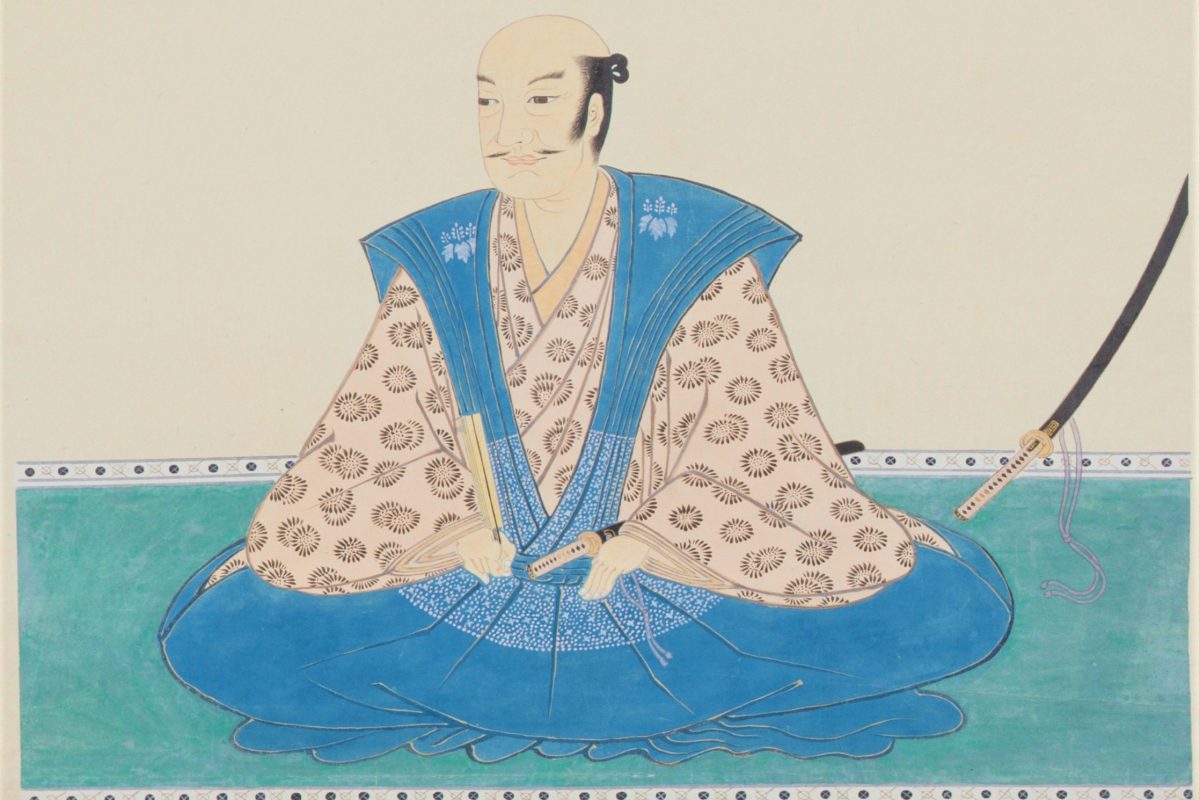
The date was 24 July 1600—just before the Battle of Sekigahara. First, let’s look at the content of Ieyasu’s letter:
“It has come to my attention that there are rumours of Ishida jibu-shoyu Mitsunari (石田治部少輔三成) raising an army in Kyoto. I would ask that you keep your troops stationed where they are and that you yourself travel to Oyama (小山) as soon as possible. Kuroda kainokami Nagamasa (黒田甲斐守長政) and Tokunaga ho-in Toshimasa (徳永法印寿昌) will provide you with further details, so I shall refrain from writing more here. I write to you with the utmost respect.”
(Excerpt from Letters from ‘Sengokubusho karano tegami―ransei ni ikita otoko tachi no sugao (戦国武将からの手紙―乱世に生きた男たちの素顔)’ by Yoshimoto Kenji (吉本健二))
On 17 July 1600, Ishida Mitsunari and his allies rose in rebellion. At that time, Ieyasu was away leading a campaign against Uesugi Kagekatsu (上杉景勝), one of the Five Elders (Go-Tairo, 五大老) of the Toyotomi government. Upon hearing of the uprising, Ieyasu halted his advance in Oyama, Shimotsuke (下野) Province (modern-day Tochigi Prefecture) and gathered his generals for a war council.
This moment was critical for Ieyasu. His goal? To persuade as many feudal lords as possible—including those loyal to the Toyotomi clan—to join his Eastern Army. And the key figure in this plan was Fukushima Masanori—a lord deeply indebted to the Toyotomi family, yet harbouring an intense hatred for Ishida Mitsunari.
Ieyasu needed Masanori to be the first to declare his allegiance at the war council in Oyama. This would set the tone for others to follow. However, writing too directly in his letter was too risky. If his words were perceived as an attempt to seize power from Toyotomi Hideyori (秀頼, the young heir of Toyotomi Hideyoshi), he could provoke a backlash, driving lords into Mitsunari’s camp instead.
Ieyasu’s solution? He deliberately avoided revealing the specifics of the negotiation. Instead, he crafted a letter that would pique Masanori’s curiosity and compel him to come in person.
The final sentence was particularly brilliant—a perfect example of what we might call the ‘teaser effect.’
Rather than laying everything out plainly, Ieyasu left gaps in the information. This played on human psychology: when something is hidden, we naturally want to know more. By mentioning Kuroda Nagamasa, a fellow Toyotomi-allied lord, Ieyasu subtly reassured Masanori that he wouldn’t be alone. The message was clear: come to Oyama, and you’ll learn everything.
This is a strategy that remains highly effective even today. It is particularly useful in situations where there is a risk of misunderstanding or when you need to adjust your approach based on the other party’s reaction. The key point is not to try and win someone over outright in a letter. Take it step by step. First, get them to engage. And to do that, you must first spark their interest. Success lies in clearing small hurdles one at a time—gradually guiding them towards the desired outcome.
Subtly letting someone know they’re your number one
Now, let’s look at another letter sent just before the Battle of Sekigahara. This one was addressed to Hoshun-in (芳春院, better known as Matsu), the formal wife of Maeda Toshi-ie (前田利家).
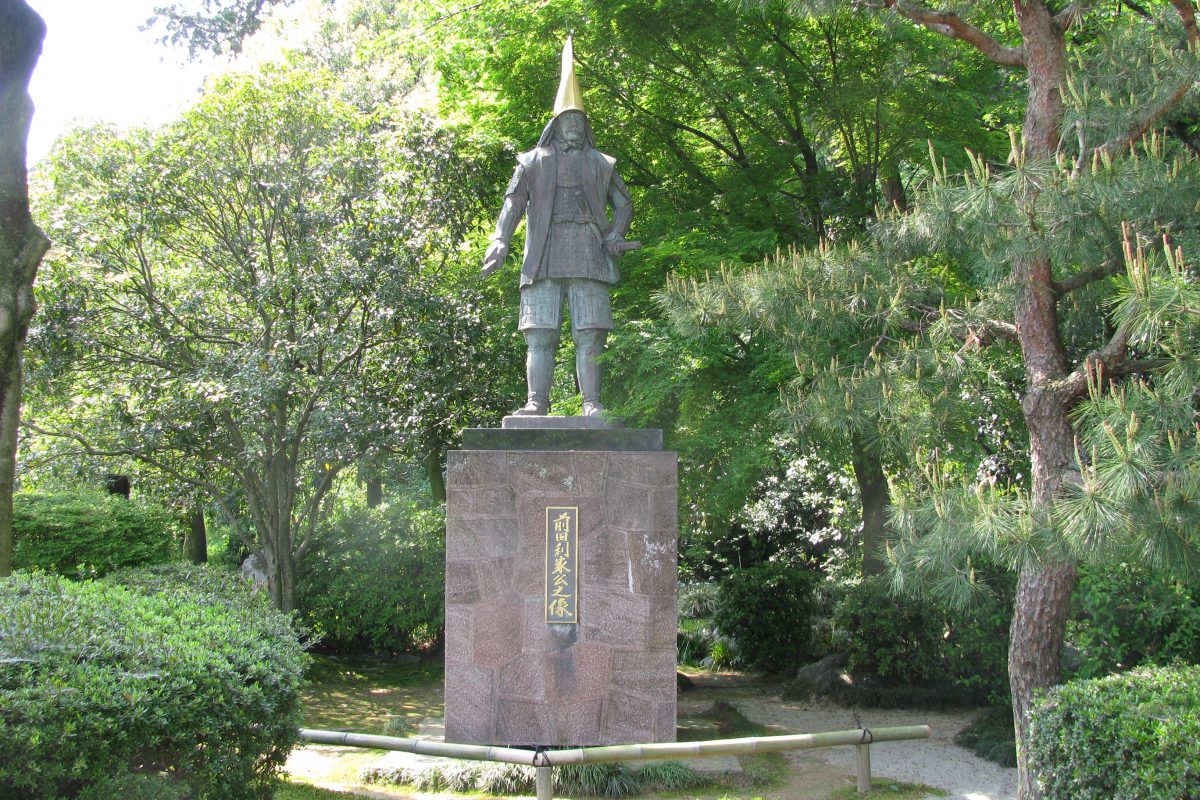
The letter is dated 26 August 1600 and was delivered via Murai Bungo-no-kami Nagayori (村井豊後守長頼), a senior retainer of the Maeda clan. Nagayori had been assigned to serve Hoshun-in at the request of her son, Maeda Toshinaga (前田利長). Here is the content of the letter:
“I have received word that Maeda Hizen-no-kami Toshinaga (前田肥前守利長) has distinguished himself in battle at Daishoji (大聖寺) in Kaga. I am deeply grateful for his loyalty, and my satisfaction is beyond words. – (Omitted section) – As for you, Murai Bungo-no-kami Naga-yori (村井豊後守長頼), I know you have endured hardships for a long time. But once the Western forces are defeated and order is restored, I shall arrange for Lady Hoshun-in to be escorted back to her homeland from Edo.
P.S. It has been a long time since I have written a letter in my own hand, but I wanted to personally express my satisfaction, so I have done so here.”
(Excerpt from ibid.)
Maeda Toshinaga was the eldest son of Maeda Toshi-ie and the second lord of the Kaga domain. If his father had still been alive at the time, the power dynamics of Japan may have played out very differently. Many believe that Toshi-ie, who was in one of the strongest positions to seize power, might have reshaped history. However, in reality, Toshi-ie passed away shortly after Toyotomi Hideyoshi, as if following in his footsteps.
His son, Toshinaga, did not abide by his father’s final instructions and instead returned to his domain. This soured relations with Tokugawa Ieyasu, forcing Toshinaga to submit to his authority. As a result, his mother, Hoshun’in, was sent to Edo as a political hostage. Meanwhile, Toshinaga himself launched an attack on Daishoji Castle in Kaga on 3 August 1600.
This letter was written to commend his achievements.
Now, there are two key points to note.
The first is ‘expectations’. Like a carrot dangling in front of a donkey, the letter hints at a reward—if the Eastern Army emerges victorious, the political hostage Hoshun-in will be released. This alone is enough to inspire a glimmer of hope. However, the letter is not merely about offering a reward; the very act of putting this promise in writing carries a deeper meaning. It subtly reinforces the message that Toshinaga must not waver, nor should he obstruct Tokugawa’s plans—a final, implicit warning.
Yet, if the letter ended on this note, it would leave a rather cold and distant impression, despite its praise for Toshinaga’s efforts. To avoid this, the final tone had to be uplifting. That’s where Ieyasu employed his second tactic: praising Toshinaga’s achievements once more—but in a subtle and natural way.
Instead of delivering direct praise, Ieyasu chose an indirect method—he wrote the letter himself.
In those days, most lords had official scribes, known as ‘yuhitsu (祐筆, private secretaries)’, to draft correspondence on their behalf. However, this letter was penned not by a yuhitsu, but by Ieyasu himself. The dramatic reveal comes in the postscript, where he explicitly states:
This conveys an image of Ieyasu’s overwhelming joy—so much so that he felt compelled to write with his own hand. The contrast is striking: the letter starts with a measured tone, even carrying hints of strategic caution, but by the end, it bursts with unrestrained delight.
This technique remains highly effective in the modern world, especially for differentiating oneself from others. Of course, having a yuhitsu in today’s setting is unrealistic, so some adaptation is required. The key is to break from one’s usual habits to emphasise sincerity.
For example, if you usually communicate via email, try calling instead. Saying something like, “I was so happy I just had to call you!” immediately conveys a sense of personal touch.
What do you think? Of course, different approaches suit different personalities, so feel free to customise it to fit your own style.
On a final note.
I know full well that I’m the last person who should be saying this. Really, I can already hear people calling me out: “You hypocrite!” But I’ll say it anyway.
The warlords of the Sengoku period—they truly have my sympathy.
Imagine having your private letters exposed to the world centuries later, dissected and analysed by strangers. That’s rather unfortunate, isn’t it? Then again, I suppose I have no right to complain—after all, I’m making a living off this.
Still, if it were only their grand, heroic letters, that would be one thing. But some of these documents reveal schemes and betrayals, or even intimate love letters. If this were today, it would be a blatant violation of privacy. Honestly, I feel a bit guilty about it.
So, when you think about it…
The best policy is to dispose of letters as soon as possible. They can’t be made public if they don’t exist. Even if they aren’t widely published, there’s always the chance that one’s descendants might stumble upon them. Rather than risk that, it’s best not allow yourself to get too sentimental and destroy them immediately.
We all have embarrassing letters tucked away somewhere at the back of a drawer—little reminders of our youthful misjudgements.
I have them. You probably do too.
Come on—be honest. You know they’re there.
References
‘Sengokubusho no tegami wo yomu (戦国武将の手紙を読む)’, by Owada Tetsuo (小和田哲男), Chuokoron-Shinsha (中央公論新社), November 2010
‘Tokugawa shitenno (徳川四天王)’, edited by Azuma Yoshihito (東由士), Eiwa (英和) Publishing Co., Ltd., July 2014
‘Sengokubusho karano tegami―ransei ni ikita otoko tachi no sugao (戦国武将からの手紙―乱世に生きた男たちの素顔)’, by Yoshimoto Kenji (吉本健二), Gakken (学研) Plus, May 2008
‘Sengokubusho ni manabu kyukyoku no manejimento (戦国武将に学ぶ究極のマネジメント)’, by Futaki Kenichi (二木謙一), Chuokoron-Shinsha (中央公論新社), February 2019
This article is translated from https://intojapanwaraku.com/rock/culture-rock/118978/




